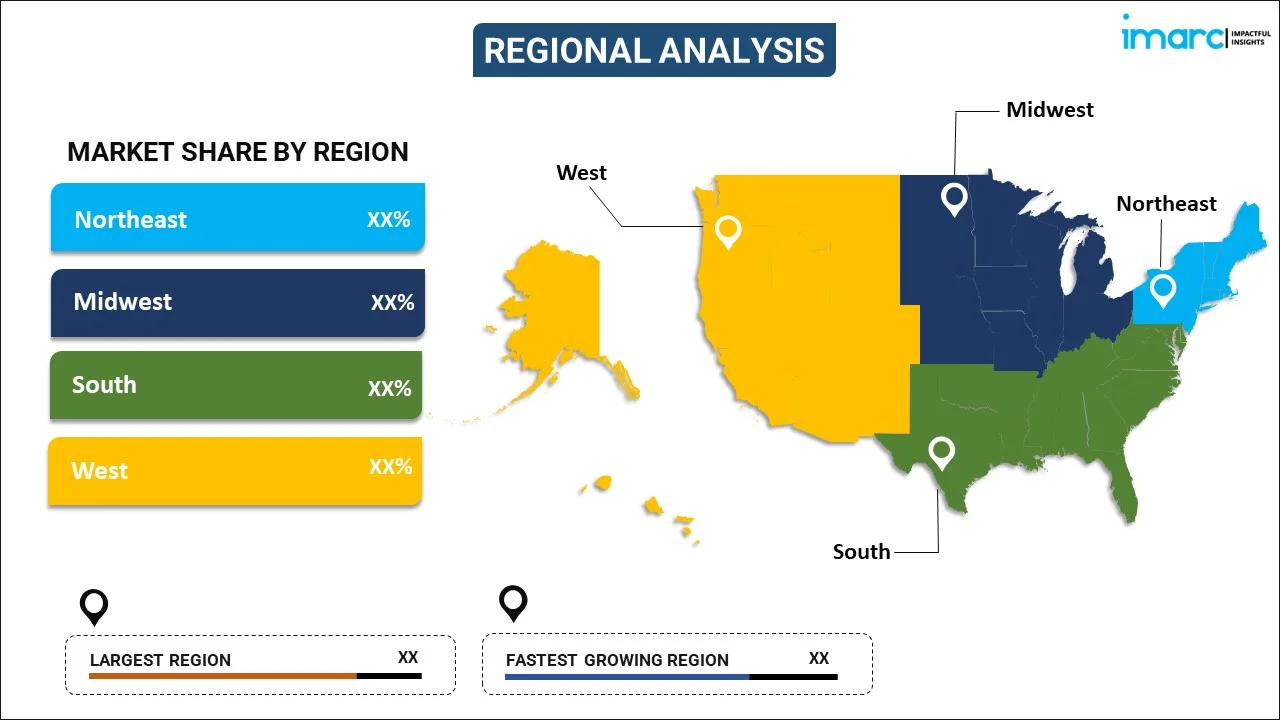
United States Aerostat Systems Market Report by Payload (Surveillance Radar, Inertial Navigation System, Thermal Imaging Camera, Electro-Optical Sensor, Electronic Intelligence, Communication Intelligence), Sub-System (Aerostat, Ground Control Station (GCS), Payload), Product Type (Balloon, Airship, Hybrid), Propulsion System (Powered Aerostats, Unpowered Aerostats), Class (Compact-Sized Aerostats, Mid-Sized Aerostats, Large-Sized Aerostats), and Region 2025-2033
Market Overview:
The United States aerostat systems market size reached USD 5.1 Billion in 2024. Looking forward, IMARC Group expects the market to reach USD 11.7 Billion by 2033, exhibiting a growth rate (CAGR) of 9.27% during 2025-2033.
|
Report Attribute
|
Key Statistics
|
|---|---|
|
Base Year
|
2024 |
|
Forecast Years
|
2025-2033 |
|
Historical Years
|
2019-2024
|
| Market Size in 2024 | USD 5.1 Billion |
| Market Forecast in 2033 | USD 11.7 Billion |
| Market Growth Rate 2025-2033 | 9.27% |
An aerostat system is a low-level airborne ground supervision system that lifts using a buoyant gas, lighter than air. It is widely used as a tactical airborne platform for radar systems, scientific equipment, and camera and communication equipment. It finds extensive applications in urban drone tracking operations to protect high-value assets in the United States.
The market is primarily driven by the increasing investments in the defense budget and military infrastructure in the United States. For instance, Bravura Information Technology Systems, Inc. recently signed a contract worth US$ 305.7 with the US army to support the maintenance and sustainment cost of Persistent Surveillance Systems-Tethered Aerostat (PSS-T). Furthermore, leading manufacturers are collaborating with telecommunication service providers to improve the telecommunication network quality, which is positively influencing the market growth. For instance, Altaeros launched the world’s first aerial cell tower SuperTower ST200 to enhance 4G LTE networks in the region. However, the sudden outbreak of the coronavirus disease (COVID-19) and the imposition of lockdown in several countries have disrupted operations at the production units of aerostat systems in the country. The market is anticipated to regain growth once the government introduces relaxations in lockdown.
Key Market Segmentation:
IMARC Group provides an analysis of the key trends in each sub-segment of the United States aerostat systems market report, along with forecasts at the country and regional level from 2025-2033. Our report has categorized the market based on payload, sub-system, product type, propulsion system and class.
Breakup by Payload:

- Surveillance Radar
- Inertial Navigation System
- Thermal Imaging Camera
- Electro-Optical Sensor
- Electronic Intelligence
- Communication Intelligence
Breakup by Sub-System:
- Aerostat
- Ground Control Station (GCS)
- Payload
Breakup by Product Type:
- Balloon
- Airship
- Hybrid
Breakup by Propulsion System:
- Powered Aerostats
- Unpowered Aerostats
Breakup by Class:
- Compact-Sized Aerostats
- Mid-Sized Aerostats
- Large-Sized Aerostats
Breakup by Region:

- Northeast
- Midwest
- South
- West
Competitive Landscape:
The competitive landscape of the industry has also been examined along with the profiles of the key players.
Report Coverage:
| Report Features | Details |
|---|---|
| Base Year of the Analysis | 2024 |
| Historical Period | 2019-2024 |
| Forecast Period | 2025-2033 |
| Units | Billion USD |
| Segment Coverage | Payload, Sub-System, Product Type, Propulsion System, Class, Region |
| Region Covered | Northeast, Midwest, South, West |
| Customization Scope | 10% Free Customization |
| Post-Sale Analyst Support | 10-12 Weeks |
| Delivery Format | PDF and Excel through Email (We can also provide the editable version of the report in PPT/Word format on special request) |
Key Questions Answered in This Report:
- How has the United States aerostat systems market performed so far and how will it perform in the coming years?
- What has been the impact of COVID-19 on the United States aerostat systems market?
- What are the key regional markets?
- What is the breakup of the market based on the payload?
- What is the breakup of the market based on the sub-system?
- What is the breakup of the market based on the product type?
- What is the breakup of the market based on the propulsion system?
- What is the breakup of the market based on the class?
- What are the various stages in the value chain of the industry?
- What are the key driving factors and challenges in the industry?
- What is the structure of the United States aerostat systems market and who are the key players?
- What is the degree of competition in the industry?
Need more help?
- Speak to our experienced analysts for insights on the current market scenarios.
- Include additional segments and countries to customize the report as per your requirement.
- Gain an unparalleled competitive advantage in your domain by understanding how to utilize the report and positively impacting your operations and revenue.
- For further assistance, please connect with our analysts.

 Inquire Before Buying
Inquire Before Buying
 Speak to an Analyst
Speak to an Analyst
 Request Brochure
Request Brochure
 Request Customization
Request Customization



.webp)




.webp)












